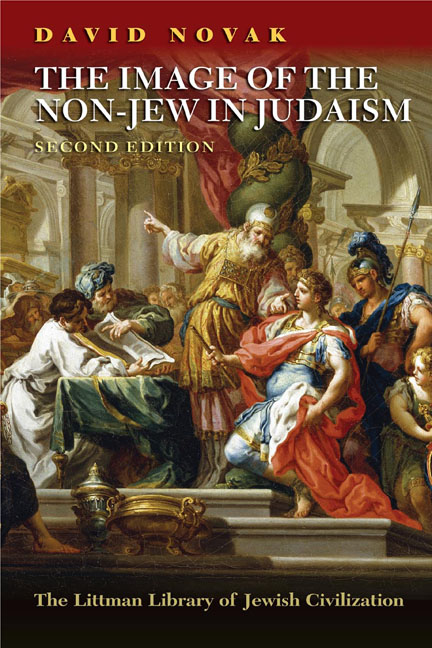Book contents
- Frontmatter
- Dedication
- Preface
- Acknowledgments
- Contents
- Chapter Summaries
- 1 The Origins of the Noahide Laws
- 2 The Law of Adjudication
- 3 The Law of Blasphemy
- 4 The Law of Idolatry
- 5 The Law of Homicide
- 6 The Law of Sexual Relations
- 7 The Law of Robbery
- 8 The Law of the Torn Limb
- 9 Aggadic Speculation
- 10 Maimonides’ Theory of Noahide Law
- 11 Albo's Theory of Noahide Law
- 12 Late Medieval Developments
- 13 Moses Mendelssohn and his School
- 14 Hermann Cohen and the Jewish Neo-Kantians
- 15 Conclusion
- Afterword
- List of Abbreviations
- Notes
- Bibliography
- Index
8 - The Law of the Torn Limb
- Frontmatter
- Dedication
- Preface
- Acknowledgments
- Contents
- Chapter Summaries
- 1 The Origins of the Noahide Laws
- 2 The Law of Adjudication
- 3 The Law of Blasphemy
- 4 The Law of Idolatry
- 5 The Law of Homicide
- 6 The Law of Sexual Relations
- 7 The Law of Robbery
- 8 The Law of the Torn Limb
- 9 Aggadic Speculation
- 10 Maimonides’ Theory of Noahide Law
- 11 Albo's Theory of Noahide Law
- 12 Late Medieval Developments
- 13 Moses Mendelssohn and his School
- 14 Hermann Cohen and the Jewish Neo-Kantians
- 15 Conclusion
- Afterword
- List of Abbreviations
- Notes
- Bibliography
- Index
Summary
Introduction
The final Noahide law is the prohibition of eating a limb torn from a living animal (ever min ha-hai). This law is expressly addressed to Noah and his descendants: “Surely flesh with its life-blood (be-nafsho damo) you shall not eat” (Gen. 9:4). Rashi paraphrases: “all the time the animal is alive you shall not eat the flesh.” Although some interpret this as referring to a prohibition against eating the blood from a living animal, the former interpretation is equally close to the plain meaning of the text.
Interestingly enough, in the Amoraic attempt to ground all of the Noahide laws as actual commands to Adam and his descendants, the Gemara presents the view of R. Johanan that the prohibition is from Gen. 2:16: “‘[from every tree of the Garden] you may surely eat (akhol t'okhal) … —but not from the limb of a living animal.” There Rashi elaborates: only what is “ready for eating” (ha'omed l'akheelah) may be eaten, whereas a living animal is ready to grow and reproduce. The Tosafists say more: before Noah the prohibition of eating meat applied only to slaughtered meat, but not to meat from an animal that died without human intervention. The prohibition also applies to a limb that fell off by itself, that is, without human intervention. Because this law is derived from an earlier verse, Gen. 9:4 is interpreted more specifically to refute any supposition that because slaughtering meat was now permitted to Noah and his descendants, the prohibition of eating the torn limb no longer applies; and to exclude reptiles from the prohibition. Only the School of Manasseh, which had a variant list of Noahide laws, is judged by the Gemara as endorsing the prohibition itself in Gen. 9:4.
This law has more technical halakhic ramifications than the other Noahide laws. This is because it has the most specific exegetical base in Genesis, and because it involves comparison with Jewish laws of slaughter, an especially knotty area of halakhah. Finally, one can discern three different philosophical approaches and one possible historical source for this prohibition.
Idolatry
The prohibition of the practice of eating a limb torn from a living animal might reflect pagan rites that the rabbis saw as prohibited to Noahides over and above the prohibition of idolatry in general.
- Type
- Chapter
- Information
- The Image of the Non-Jew in JudaismThe Idea of Noahide Law, pp. 135 - 143Publisher: Liverpool University PressPrint publication year: 2011

